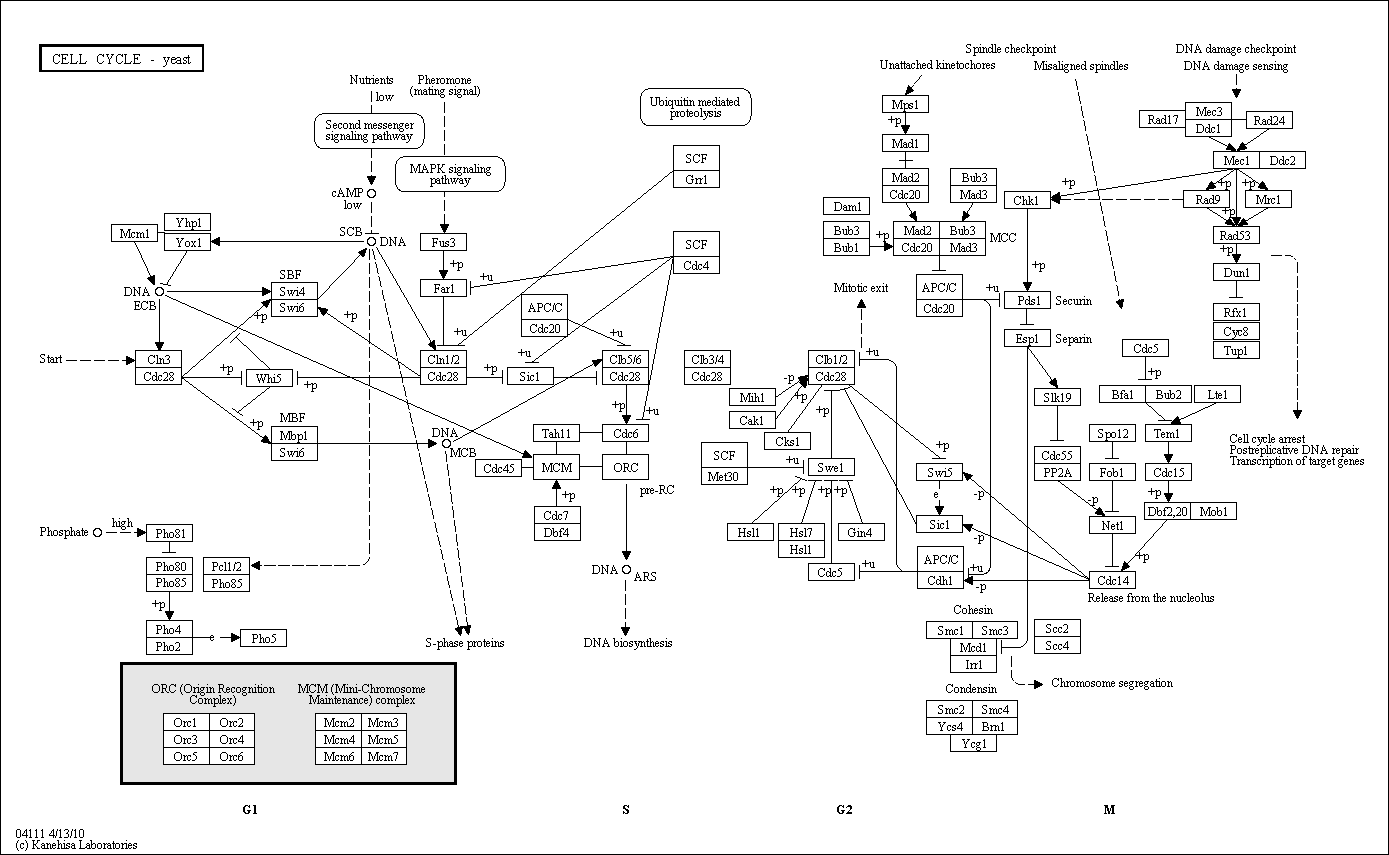Cell Cycle - Yeast
Description: Yeast is a single celled eukaryote with an alternating cell cycle. This means that there is both a haploid and diploid phase. In the haploid phase there are two different types of gametes, a-type and ?-type. Under normal conditions, these gametes reproduce through mitosis, a process known as budding. Under stressful conditions, however, these cells will secrete a reproductive pheromone, known as a-factor and ?-factor respectively. Each cell type contains G-protein linked receptors for the opposite pheromone. When the pheromone binds to this receptor, the signal transduction pathway is initiated which ultimately leads to haploid cell cycle arrest and actin microfilament changes which result in a different cell shape called a shmoo. The shmoo has the appearance of a cell that has been 'pulled' in the direction of the pheromone. When two different shmoo cell types come together, they fuse to form a zygote; this is the first step in the diploid portion of the cell cycle. The newly formed cell is now a diploid, containing two separate sets of DNA. This cell then undergoes meiosis to again form gametes, representing the start of the haploid phase and the beginning of the cycle.

Related BMRB Molecules
For complete information about pathway, see KEGG [map04111]
